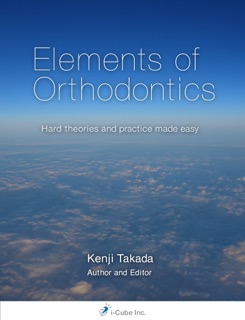This book is an expression of Dr. Kenji Takada’s interest in the “big picture” of orthodontics during his distinguished career at Osaka University as a faculty member, orthodontic department chairman and dean of the School of Dentistry. It covers all aspects of orthodontics, but it differs from most texts in its effort to integrate neurophysiology and mathematical modeling into a better understanding of the etiology of malocclusion and jaw function and in the incorporation of both neurophysiology and modeling into diagnostic procedures.
I first met Kenji in 1982 while he was spending a post-doctoral year in Alan Lowe’s laboratory at the University of British Columbia, and he became a friend with whom I have stayed in touch through the years. In his early years as a faculty member at Osaka, he was already working out some of the mechanisms by which TM joint problems are related to jaw function and dental occlusion. He remained focused for most his career on obtaining a better understanding of adaptations to malocclusion and how this affected orthodontic diagnosis and treatment planning.
This book offers a unique summary, taken both from Kenji’s work and from other published data, of the current understanding of the neurophysiology of jaw function and its relationship to orthodontic problems. For example, in addition to describing facial proportions and how to evaluate them in the context of orthodontic treatment, it includes findings from neuroscience about neural recognition of human faces and a discussion of the neural basis for multiple versions of facial beauty. A mathematical model of a non-linear description of diagnostic elements is incorporated into the diagnostic scheme that can simulate expert decisions.
The book also includes information about biomechanical modeling of orthodontic tooth movement that goes beyond classic finite element analysis, which has not been successful in predicting the outcome of various force systems against the teeth, and offers a bio-mathematical kinetic model that has the potential to reach that goal. A similar approach is taken in the development of an optimized model that predicts whether non-extraction orthodontic treatment or extractions would be the best option.
In short, Elements of Orthodontics is a step beyond existing orthodontic textbooks. There are many new things for orthodontic residents and practitioners to consider and evaluate, on their way to a better understanding of the intellectual foundation of our specialty.
From Preface by William R. Proffit, DDS, PhD; Kenan Distinguished Professor, Orthodontics, University of North Carolina School of Dentistry, Chapel Hill, North Carolina


